Some snakes are so small, they could fit in your pocket—and you’d never even notice.
Forget the monstrous pythons or hulking rattlers. We’re talking about snakes so tiny, they could curl up inside a bottle cap and take a nap. These little reptiles are masters of going unnoticed, slithering through leaf litter and garden beds like shy, scaled whispers.
You’ve probably walked past one and had no idea. Some are no thicker than a shoelace, others shorter than your pinky. And yet, each one plays a fascinating role in the wild—chomping on pests, hiding from predators, and surviving in plain sight.
Ready to meet the smallest serpents in America? They’re not scary, they’re not slimy, and they’re definitely not what you expect.
Barbados Threadsnake
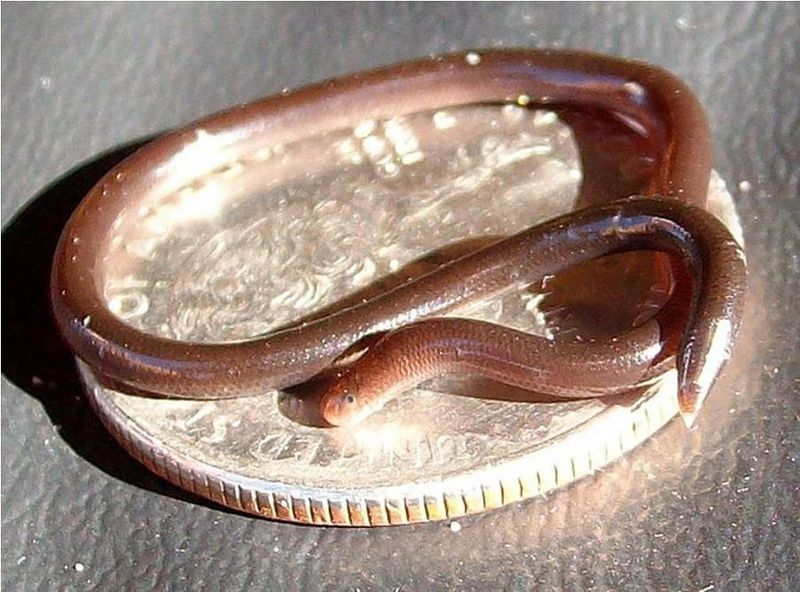
Imagine holding in your hand the smallest snake in the world, the Barbados Threadsnake. This petite reptile, no longer than a spaghetti noodle, can easily fit inside a bottle cap. Found predominantly in the warm embrace of Barbados, these snakes dwell under rocks and in the soil.
Their slender, earth-toned bodies make them almost indistinguishable from worms. Despite their size, they play a vital role in their ecosystem by feeding on termites and ants.
A curious fact: these snakes give birth to the world’s smallest snake hatchlings, further adding to their miniature appeal.
Brahminy Blindsnake
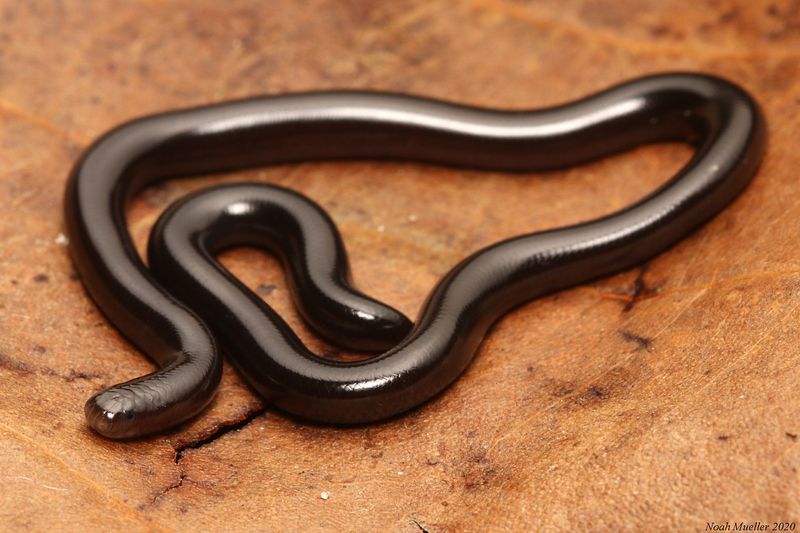
Meet the Brahminy Blindsnake, often mistaken for an earthworm due to its glossy, pinkish-brown skin and minute size. These snakes are cosmopolitan travelers, hitching rides in plant pots and spreading across various continents.
Their secretive lifestyle means they’re often found lurking in moist soil, unseen by most. Though they lack vision, their sensory skills are impeccable, enabling them to hunt ants and termites with precision.
Intriguingly, these snakes are parthenogenetic, meaning females reproduce without males, leading to genetically identical offspring. It’s a small wonder of nature’s adaptability.
Ringneck Snake
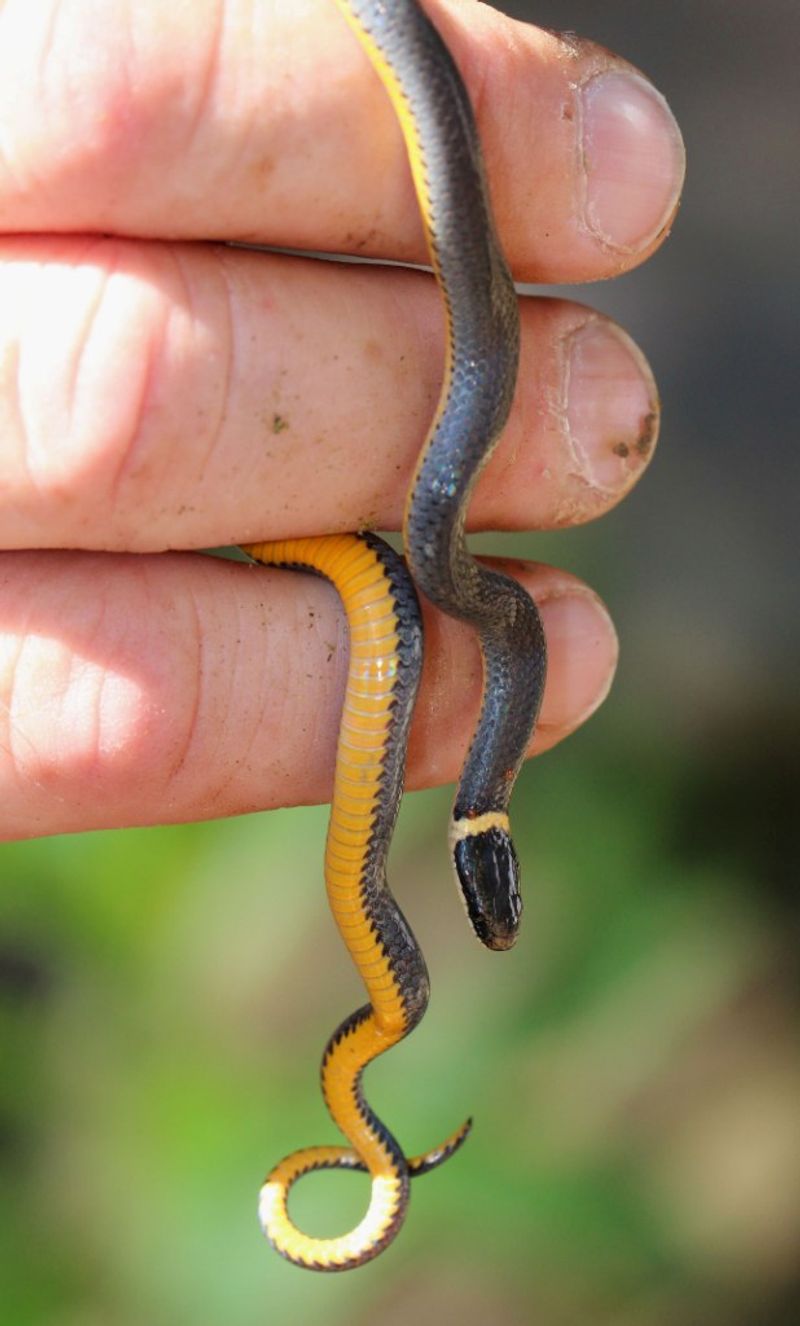
With its distinctive yellow or orange ring around the neck, the Ringneck Snake is a charming sight in North America’s forests and grasslands. Despite its modest size, this snake’s vibrant collar adds a touch of elegance.
They are elusive creatures, preferring to hide under logs and rocks during the day. At night, they emerge to feast on invertebrates and small amphibians.
A fun fact: when threatened, they show off their bright belly and coil their tails, a simple yet effective defense mechanism. Such theatricality is rare among tiny snakes.
Western Worm Snake

The Western Worm Snake, with its smooth, dark back and contrasting pink belly, epitomizes subtle beauty. Found in the Midwestern United States, these tiny serpents thrive in burrows and under debris.
Their appearance is reminiscent of an earthworm, aiding their camouflage against predators. As secretive dwellers, they feast on soft-bodied invertebrates, particularly earthworms, matching their habitat perfectly.
It’s interesting how these snakes play a crucial role in soil aeration, inadvertently aiding plant growth. Their ecological contributions belie their unassuming presence.
Flat-headed Snake

The Flat-headed Snake is a lesser-known gem of the reptile world, residing in the southern United States. This snake’s namesake feature, a flat head, is not just for show—it aids them in burrowing through sandy soils and leaf litter.
Their reddish-brown scales catch the sunlight, giving them a polished appearance. Although tiny, their appetite for insects and spiders reflects a fierce predatory instinct.
A quirky tidbit: despite their diminutive size, they possess a relatively aggressive feeding behavior, swiftly capturing prey in their minute jaws. Nature’s efficiency at its finest!
Eastern Worm Snake
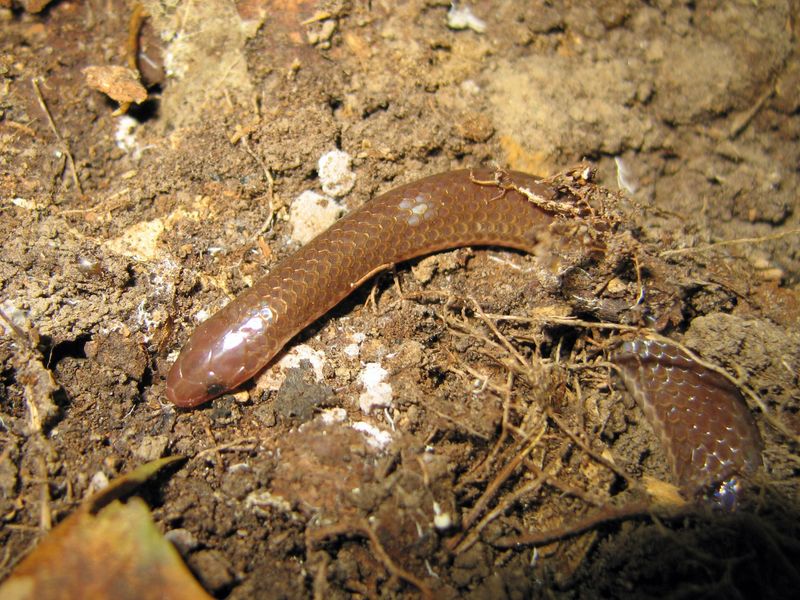
The Eastern Worm Snake is a modest serpent with a shy disposition, frequenting the woodlands of Eastern America. Its pinkish hue and smooth scales offer an almost iridescent charm, often leading it to be mistaken for an earthworm.
Their lives are led underground, navigating through soil and leaf litter with ease, consuming their favorite meal—earthworms.
These snakes play a silent yet critical role in keeping the soil ecosystem balanced. Their unobtrusive nature belies a significant ecological impact, demonstrating that even the smallest creatures contribute greatly to their habitats.
Texas Blind Snake
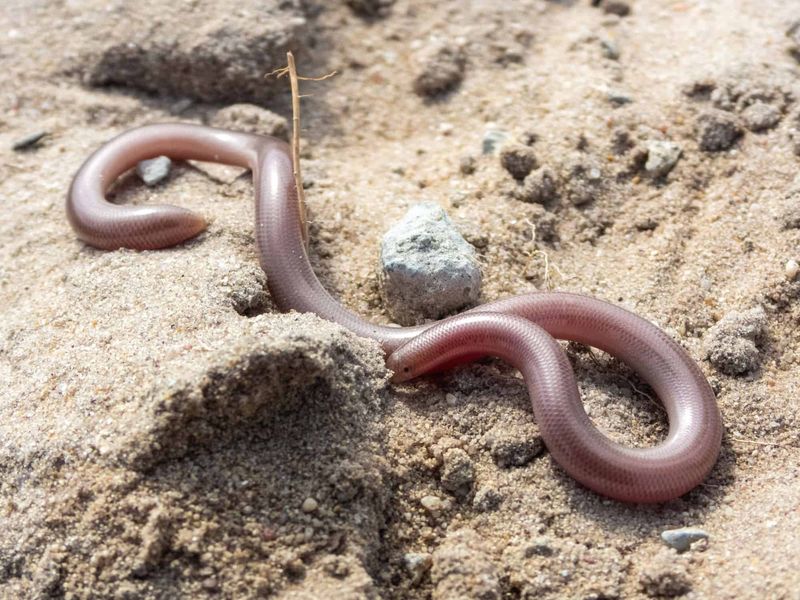
In the sun-drenched landscapes of Texas, the Texas Blind Snake thrives underground. Its metallic sheen and minute size make it a unique inhabitant of the arid terrain.
Though visually impaired, these snakes possess acute senses that guide them to their insect prey with remarkable accuracy. They are often found burrowing through sand and soil, unseen by the casual observer.
Interestingly, despite their limited sight, they are adept at navigating their surroundings, displaying a surprising level of efficiency and survival instinct in their harsh environment.
Red-bellied Snake

The Red-bellied Snake is a striking presence with its vivid underbelly, a contrast to its otherwise muted brown back. Found in damp forests across North America, these snakes are often seen navigating through leaf litter and moss.
Their diet consists mainly of slugs, making them valuable allies in maintaining ecological balance. Despite being one of the more colorful tiny snakes, they are shy and rarely seen by humans.
Their striking appearance and dietary habits make them a fascinating study of adaptation and ecological importance in their native habitats.
Brown Snake

The Brown Snake, often found in urban and rural areas alike, is a model of adaptability. Its unassuming brown color provides perfect camouflage against the forest floor and city gardens.
These snakes are particularly fond of slugs and snails, helping to control these populations in gardens. They are gentle and harmless to humans, often going unnoticed due to their discreet nature.
With a presence from Canada to Central America, these snakes show resilience and versatility, thriving in diverse environments from suburban gardens to thick forests.
Dekay’s Brown Snake
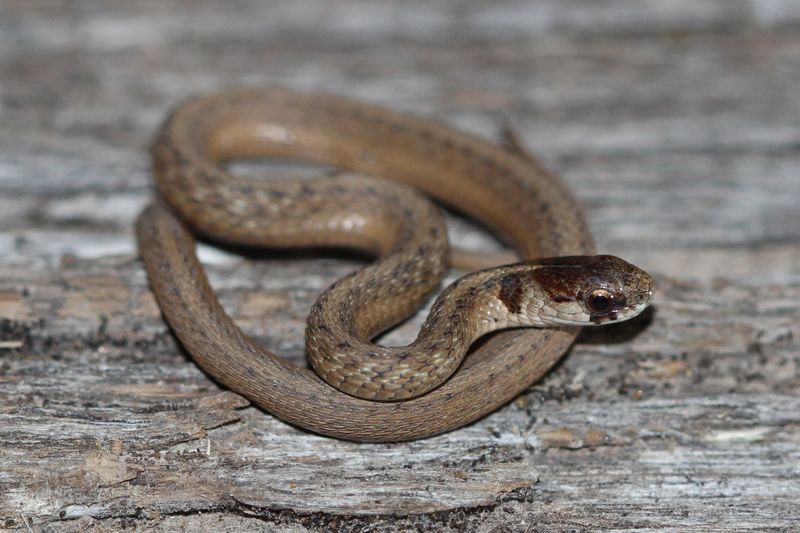
Dekay’s Brown Snake is a common resident of North American gardens and woodlands, characterized by its light-brown color and distinctive rows of dark spots. Despite their small size, they have an impressive geographical range.
These snakes prefer damp environments where they prey on soft-bodied invertebrates. They are non-aggressive and often overlooked due to their excellent camouflage.
Interestingly, they owe their name to James Ellsworth De Kay, a 19th-century naturalist who documented their existence. Their historical namesake adds a touch of academic intrigue to their humble existence.
Smooth Earth Snake
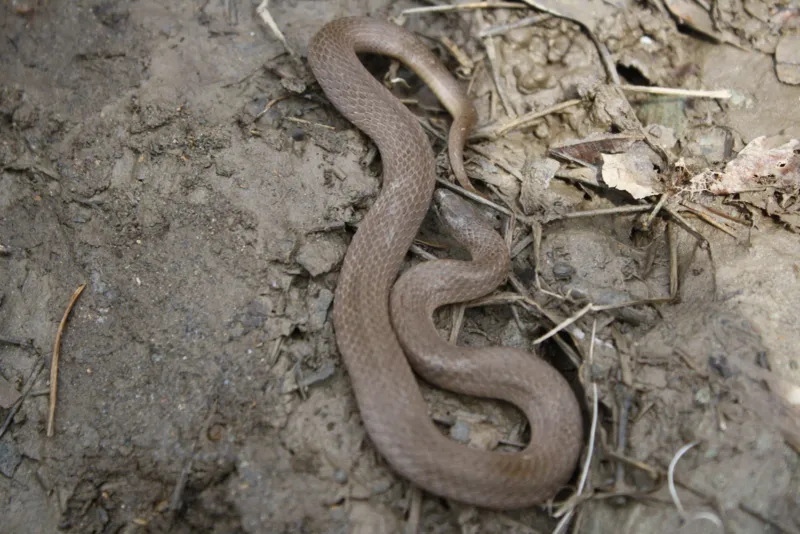
The Smooth Earth Snake may not be flashy, but its smooth, grayish body is perfectly suited for a life spent under leaves and logs. This snake calls the southeastern United States home, blending seamlessly into its environment.
Its diet of choice includes earthworms and small insects, contributing to its role in the ecosystem as a natural pest controller. Despite its secretive lifestyle, this snake is crucial for maintaining ecological balance.
Smooth Earth Snakes are a testament to the beauty in simplicity, proving that even the most understated creatures play vital roles in nature.
Scarlet Snake
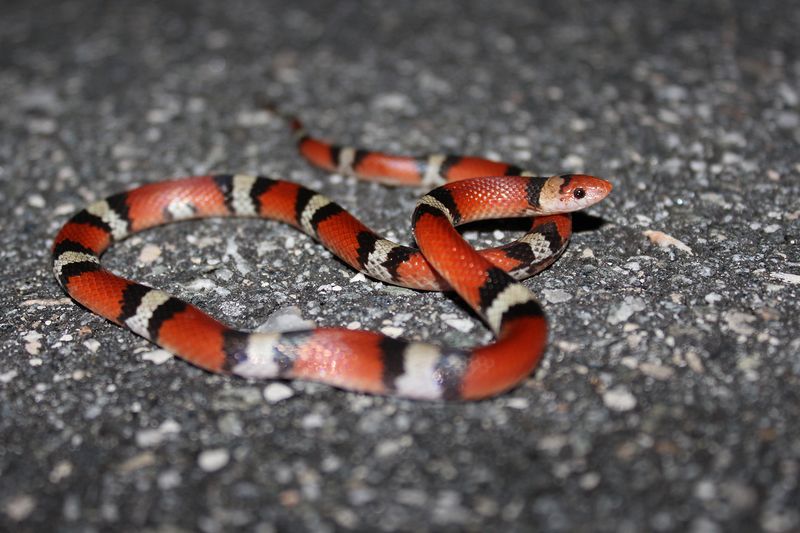
Scarlet Snakes are vibrant gems in the world of tiny serpents, boasting a striking pattern of red, black, and white bands. These snakes, native to the southeastern United States, are often confused with the venomous coral snake.
However, Scarlet Snakes are harmless and play a beneficial role in controlling rodent populations by feeding on their eggs. They are elusive and prefer the cover of night to hunt.
Their stunning appearance is a reminder of the vibrant diversity found in nature, and their presence enriches the ecosystem with color and life.
San Bernardino Mountain Kingsnake

With its striking black and white bands, the San Bernardino Mountain Kingsnake is a visual marvel. Found primarily in the mountainous regions of Southern California, this snake is a master of camouflage. It often slithers under rocks or logs, blending seamlessly with its surroundings.
Measuring just 12 to 18 inches, it fits comfortably under a bottle cap. This small but mighty serpent preys on lizards and rodents, helping to maintain ecological balance. Despite its diminutive size, its presence is mighty. Conservation efforts ensure its habitat remains protected, allowing it to thrive.
Plains Black-headed Snake

The Plains Black-headed Snake, with its unassuming demeanor and distinctive black head, is a stealthy inhabitant of America’s grasslands. Stretching no longer than 13 inches, this tiny snake is adept at avoiding predators.
Its diet consists of insects and small vertebrates, contributing to the ecological health of its habitat. Known for its secretive nature, it often hides beneath soil or leaf litter. Despite its size, its role in pest control is significant. Conservation efforts highlight the importance of preserving grassland ecosystems to ensure the ongoing survival of this little snake.

